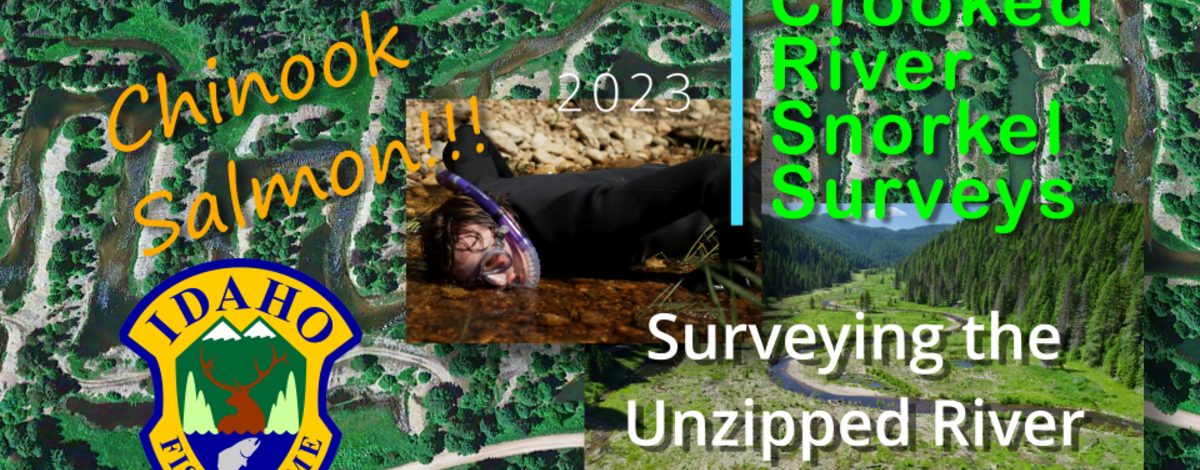Crooked River is a tributary of the South Fork of the Clearwater River in northcentral Idaho. It is approximately 5 miles west of Elk City. This river is home to spring Chinook salmon. They return 354 river miles from the Pacific Ocean to spawn here. Their young will rear in these waters. B-run steelhead and bull trout are also present. Both are listed under the Endangered Species Act. In addition, Coho salmon, cutthroat trout, Pacific lamprey, and Idaho Giant Salamanders inhabit this river.

Snorkel surveys help pay big dividends ecologically and economically
Between the late 1930’s and 1950’s, the lower Crooked River valley was heavily impacted by industrial dredge mining for gold. The Mount Vernon dredge had 65, 2 cubic foot interconnected buckets that could excavate up to 2,000 cubic yards of pay gravel per day. It could dig to a maximum depth of 20 feet. The dredge dug 24 hours per day, with three shifts, except for maintenance, repair, cleaning, and moving ahead.
In the early part of the twentieth century, the Crooked River dredge provided jobs as the nation was recovering from The Great Depression. During the dredge’s tenure, crew size ranged from 10 to 20 men. The Ghost Town of Gnome Village, just north of Orogrande, provided housing for the crews.
Wildfires play a natural role and have always been an important element for the Crooked River Valley ecosystem. They provide large woody debris, cover, and reset the nutrient cycle. In time, the stark black landscape is replaced by lush green regrowth.
Unlike wildfires, dredging produced unnatural landscapes that will not return to a natural state without aid. Large dredge tailing rock piles, as tall as 20 feet, were extruded from the dredge. They constricted and separated the river from the rest of the valley. One section, The Tortured Meanders, with its 90 degree turns, looked like a zipper from above. Unnaturally deep dredge ponds were also created and left behind.
The Nez Perce Tribe, Nez Perce-Clearwater National Forest, and others partnered to restore channel and floodplain functions in 2 miles of the lower river section. This effort will also improve water quality in the Crooked River valley. The six-year, $3 million project to unzip the river started in 2015.
Wetlands were increased in both area and diversity. The dredge tailing piles were flattened and some of the ponds were filled.
To monitor the fishes’ response to the restoration actions, Idaho Department of Fish and Game crews will snorkel survey this reach annually as they have since 1985. Eighteen survey transects are in the Crooked River basin. Four are in the restoration area. Sites are in the mainstream channel and in the narrow side channels. During the 2023 surveys, the crews observed Coho and spring Chinook salmon, steelhead and cutthroat trout, and other native species.
Besides being good ecologically for the Crooked River valley, this restoration work is good economically for the neighboring communities. A 2005 study by Don Reading, found that restored salmon and steelhead fisheries could provide an additional $23 million annually to the communities of Elk City and Grangeville. Snorkel survey crews also contribute through fuel, food, and other purchases.
Snorkel surveys are helping habitat project managers monitor the fishes’ response to restoration efforts. This will guide future projects to benefit wild salmon and steelhead trout ecologically and local communities economically.
For more about this project, including the economic study, visit these websites: https://www.fs.usda.gov/detail/nezperceclearwater/news-events/?cid=STEL… https://www.webpages.uidaho.edu/fish510/PDF/FishingEconReport.05.pdf
